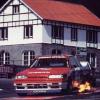FMIC + Apexi air filter = HKS SSQ BOV?
Announcements
-
Similar Content
-
Latest Posts
-
By TurboTapin · Posted
Thanks for the explanation, I'll sleep a little smarter tonight! Cheers. -
By Djdannyr32 · Posted
Being this happened about 4 years ago, i honestly forget exactly what is was, but I wound bringing to Simon at SR Werks when he was here in NY. He was able to properly diagnose and repair. I believe it had to do with the harness behind my dash. -
It's because the air comes in over #3 & #4. The two "dead" ends of the plenum are at #6 & #1, with #6 being a little more "compromised" (Sorry about all the quote marks) than #1, due to the shape. So you get the dead end effect at #6 & #1 where dynamic pressure converts to static pressure, likely causing the air flow to be highest for these. The others are then just working in from the ends to the centre. 6 -> 1 is only valid for FFPs.
-
Cut back on the attitude champ, no one is obligated to help you. The chances of Forester owners on here are quite low, considering this forum is called Skylines Australia. https://www.subarupartsdeal.com/parts/subaru-under-cover-front~56410sa000.html ^ that picture looks wrong, because if you see the diagram, 56410SA070 looks correct. You can always check where the mounting holes are on your car, and compare them to the pictures.
-
By TurboTapin · Posted
Hey Duncan, I've always set them up from 6 -> 1. Due to slightly higher EGT's, I also add a small amount of fuel to cylinder 6 & 5. I understand why you start at 6 but curious as to why you then continue somewhat based on firing order? Thanks
-



Recommended Posts
Create an account or sign in to comment
You need to be a member in order to leave a comment
Create an account
Sign up for a new account in our community. It's easy!
Register a new accountSign in
Already have an account? Sign in here.
Sign In Now